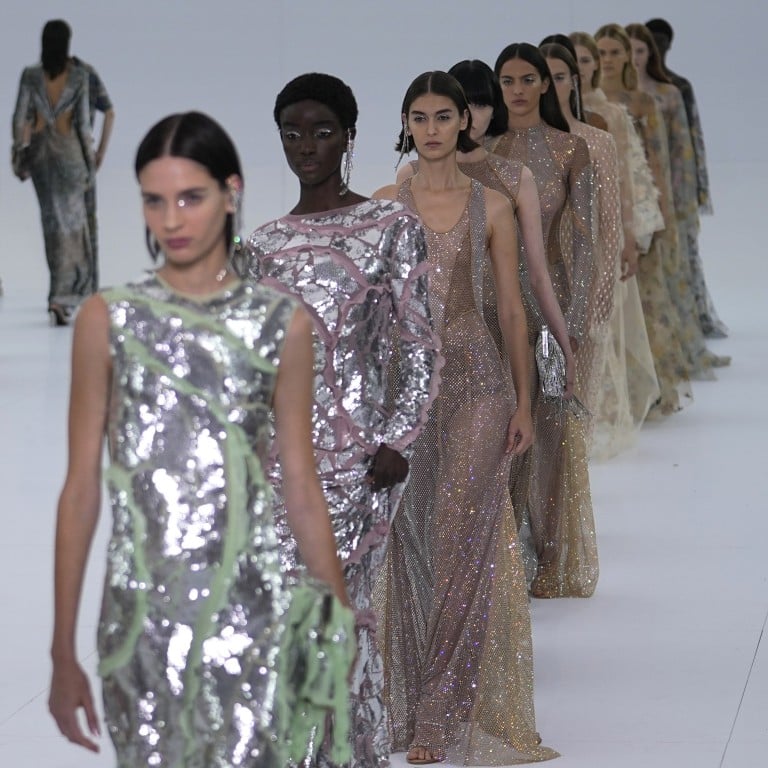Introducing the Rich Heritage of Eastern Fashion
Discovering the elaborate tapestry of Eastern style reveals a globe where custom fulfills development, and workmanship intertwines with cultural importance. From the opulent silks of old dynasties to the detailed embroidery of nomadic tribes, each garment narrates that transcends time and boundaries, resembling the abundant heritage and creative legacy of the East. As we peel back the layers of background and tradition, an interesting trip awaits, unwinding the tricks behind the exciting allure and enduring influence of Eastern style on the international phase.
Origin of Eastern Fashion

In Mesopotamia, as an example, the Sumerians and Babylonians produced garments making use of natural leather, bed linen, and wool, decorated with detailed patterns and jewelry. Ancient Egyptians are renowned for their innovative weaving abilities and the use of lightweight, breathable materials like bed linen. Chinese style stressed the value of color importance and elaborate embroidery methods, while Indian clothing featured vivid shades, elegant materials like silk and cotton, and intricate drapery styles such as the saree.
These ancient worlds not just influenced each other but likewise led the way for the varied and culturally abundant tapestry that is modern Eastern style. Via centuries of advancement, Eastern style remains to thrive, blending tradition with modern influences to create distinct and ageless styles.
Cultural Impacts and Practices
Attracting from centuries-old personalizeds and ideas, cultural influences and traditions play an essential function in shaping the essence of Eastern fashion (eastern wear pakistan). The rich tapestry of cultures throughout Eastern areas such as Asia, the Center East, and Africa has actually greatly affected the clothes styles, colors, fabrics, and develops that prevail in Eastern fashion today
In countries like India, Japan, and China, conventional garments like robes, cheongsams, and sarees continue to hold considerable cultural importance and are often embellished with intricate needlework or symbolic patterns that mirror ingrained beliefs and values. In Center Eastern countries, the streaming abayas and kaftans put on by males and females not only offer as moderate attire however also reflect the area's social heritage and Islamic practices.
Furthermore, making use of specific shades like red for great luck in Chinese culture or elaborate geometric patterns motivated by Islamic design further exhibit how social influences manifest in Eastern style - eastern wear pakistan. By recognizing and maintaining these cultural impacts and traditions, Eastern fashion continues to progress while staying true to its rich heritage
Development of Eastern Apparel
Gradually, Eastern garments have actually undertaken significant makeovers, reflecting a mix of practice and modernity in their style and style. Traditional Eastern garments such as the saree, salwar, hanbok, and robe kameez have actually developed to include modern components while maintaining their cultural essence.
One noteworthy advancement is the usage of ingenious textiles and strategies in Eastern garment construction. Conventional handwoven textiles like silk and cotton have been matched with contemporary materials such as polyester and blends, using boosted resilience and ease of care. Additionally, developments in printing innovations have allowed elaborate patterns and designs to be incorporated into Eastern garments with precision and detail.
In addition, adjustments in shape and customizing have modernized check my blog Eastern attire, making them more versatile and suitable for varied celebrations. Conventional dress codes have loosened up, permitting trial and error with shades, designs, and embellishments. This advancement has not only made Eastern garments more accessible and enticing to an international target market however has additionally guaranteed their continued importance in contemporary style landscapes.
Meaning in Eastern Outfit
Discovering the ingrained cultural relevance woven into Eastern clothing reveals an abundant tapestry of meaning and tradition. Eastern garments are often imbued with icons that reflect the user's societal standing, religious ideas, and social identity. For example, in several Eastern cultures, the shade red symbolizes good luck and prosperity, making it a preferred option for wedding apparel. In a similar way, elaborate embroidery patterns can communicate tales of folklore or stand for true blessings for the user.
In addition, details garments hold symbolic definitions. Its layout, material, and even the way it is put on all lug deep social relevance.

Influence of Eastern Fashion Today

The consolidation of Eastern components in Western style has actually caused a blend of designs that satisfy varied preferences and choices (eastern wear pakistan). Developers frequently web draw inspiration from Eastern silhouettes, textiles, and patterns, developing cutting-edge and one-of-a-kind pieces that blend traditional and modern looks. This cross-cultural exchange has not only revitalized the garment industry yet additionally promoted a deeper appreciation for Eastern heritage and craftsmanship
In addition, the surge of social networks and digital platforms has even more intensified the impact of Eastern fashion, allowing brands and developers to get to a broader audience and showcase their social heritage to the world. Through collaborations, style shows, and on-line campaigns, Eastern fashion remains to develop and thrive in today's interconnected and dynamic international landscape.
Final Thought
Finally, the abundant heritage of Eastern fashion is a testimony to the cultural impacts, elaborate workmanship, and profound importance embedded in each garment. From old worlds to modern-day interpretations, Eastern style continues to mesmerize with its unique blend of practice and advancement. The influence of Eastern fashion today functions as a reminder of the ageless elegance and creative expression that have actually made it a worldwide sensation celebrated for its rich social heritage.
Exploring the elaborate tapestry of Eastern style unveils a world where custom fulfills development, and workmanship links with cultural significance.The sustaining symbolism and cultural relevance installed in Eastern attire continue to form and affect the modern impact of Eastern fashion today. Eastern fashion has actually gone beyond boundaries, becoming a global phenomenon accepted by developers, site celebs, and style enthusiasts worldwide.In conclusion, the rich heritage of Eastern fashion is a testimony to the social impacts, detailed craftsmanship, and profound significance embedded in each garment. The effect of Eastern fashion today offers as a tip of the classic style and artistic expression that have made it a global phenomenon celebrated for its rich cultural heritage.